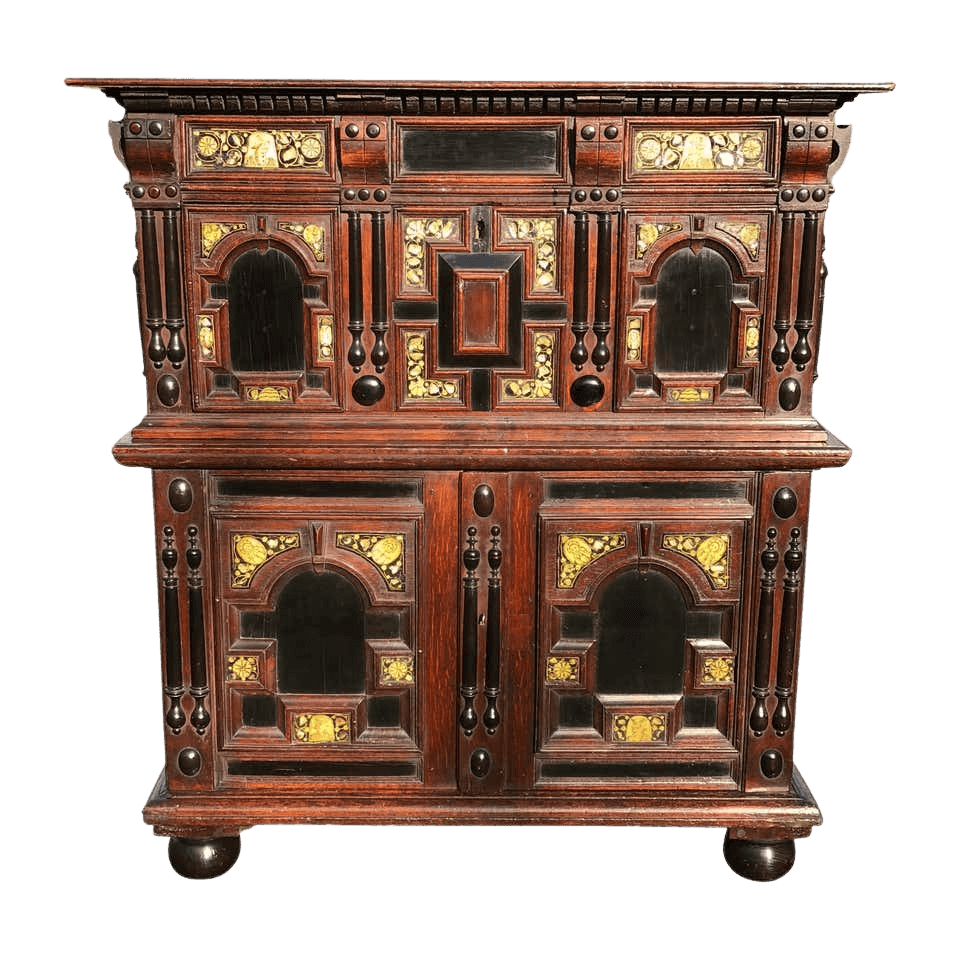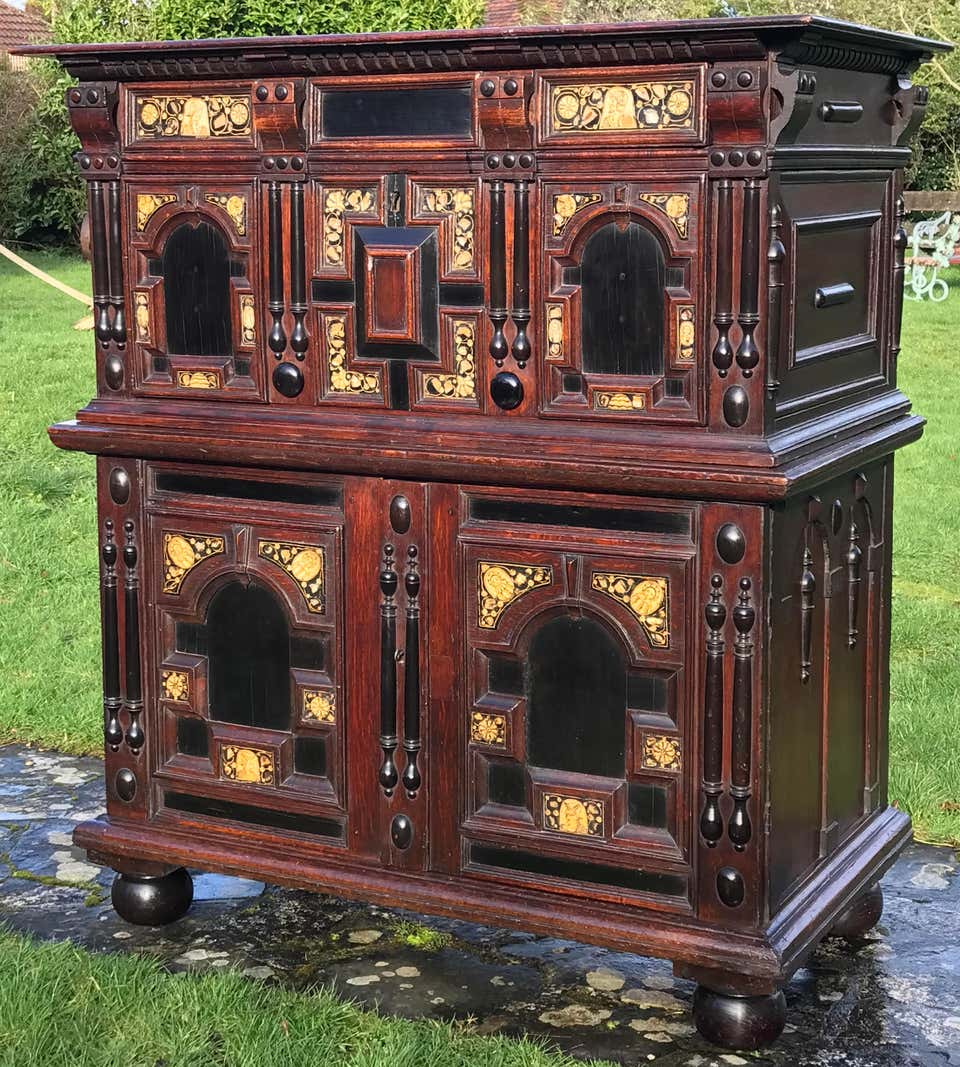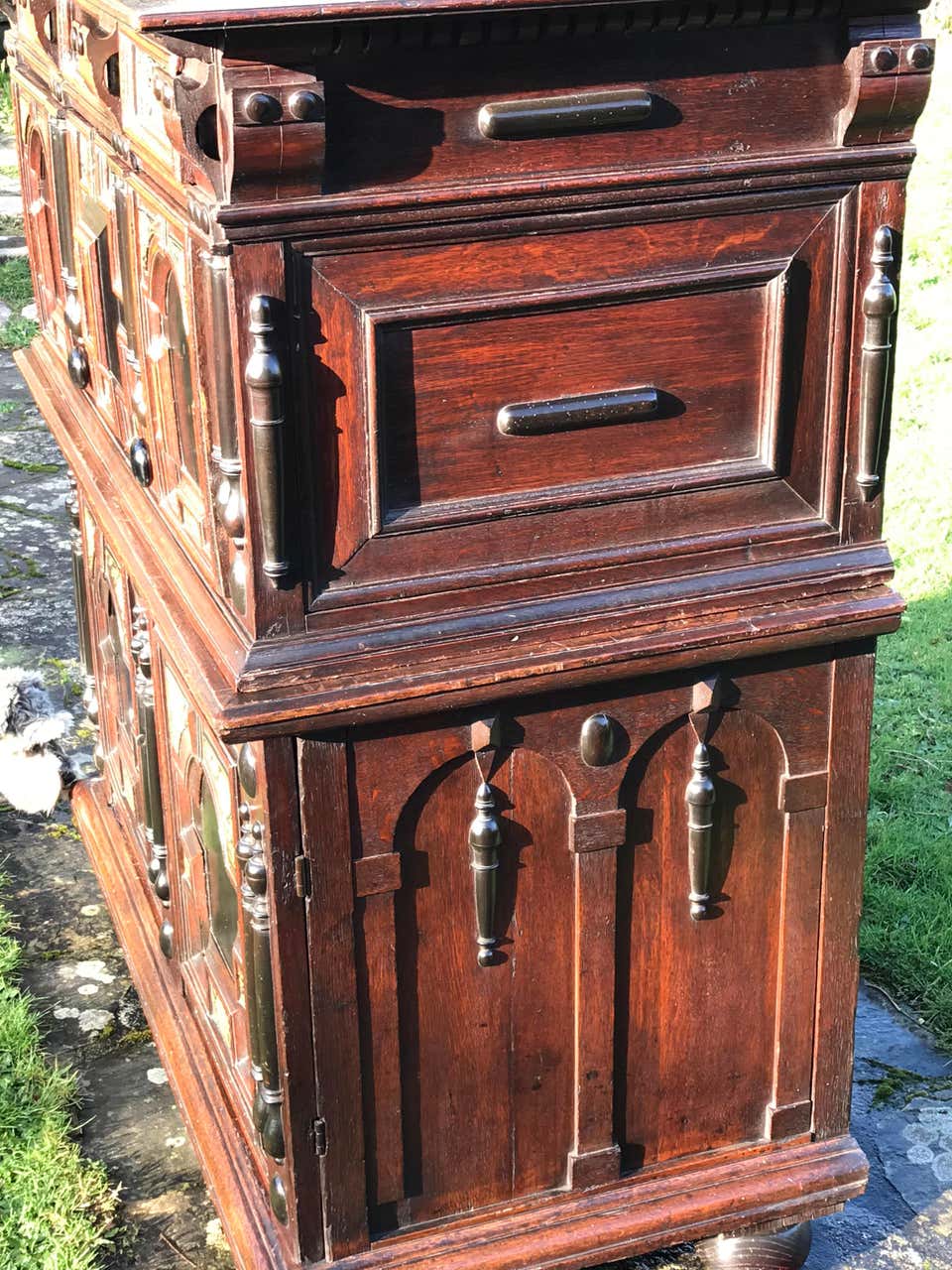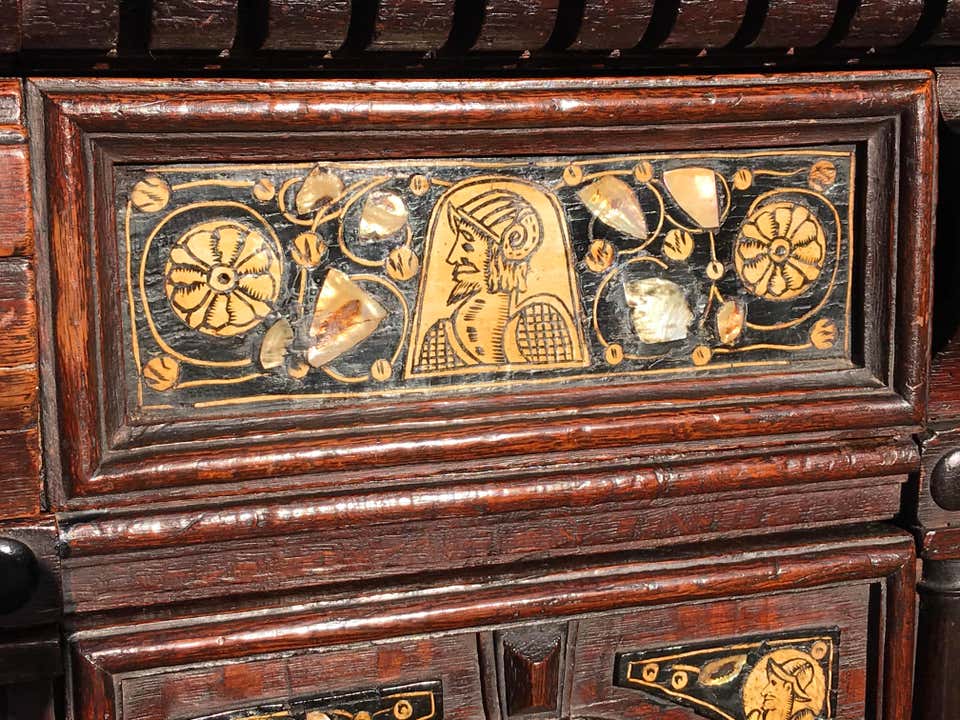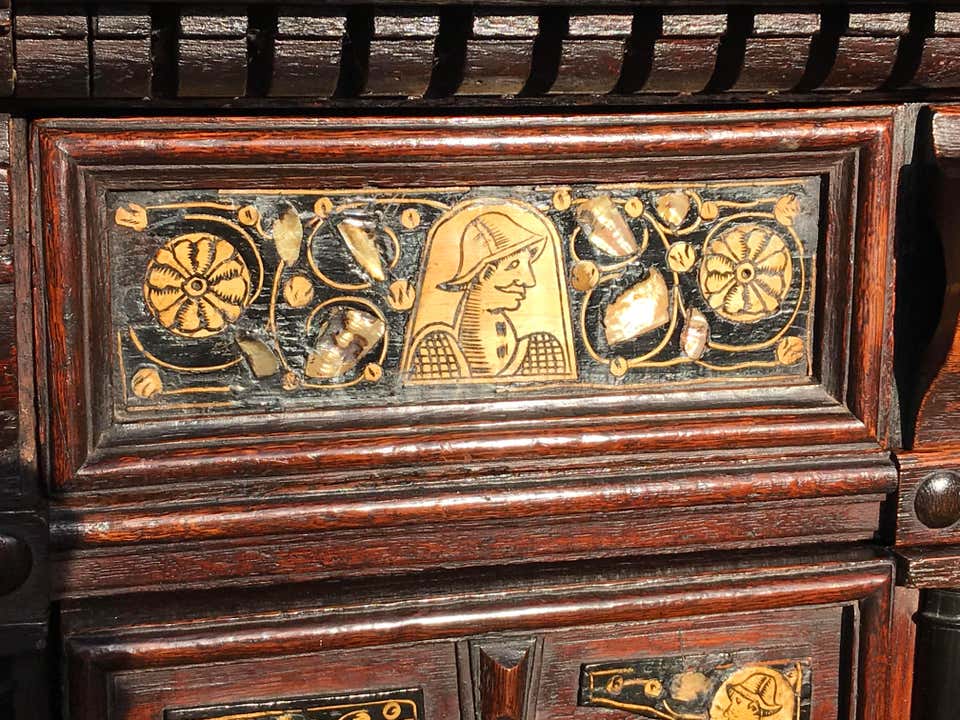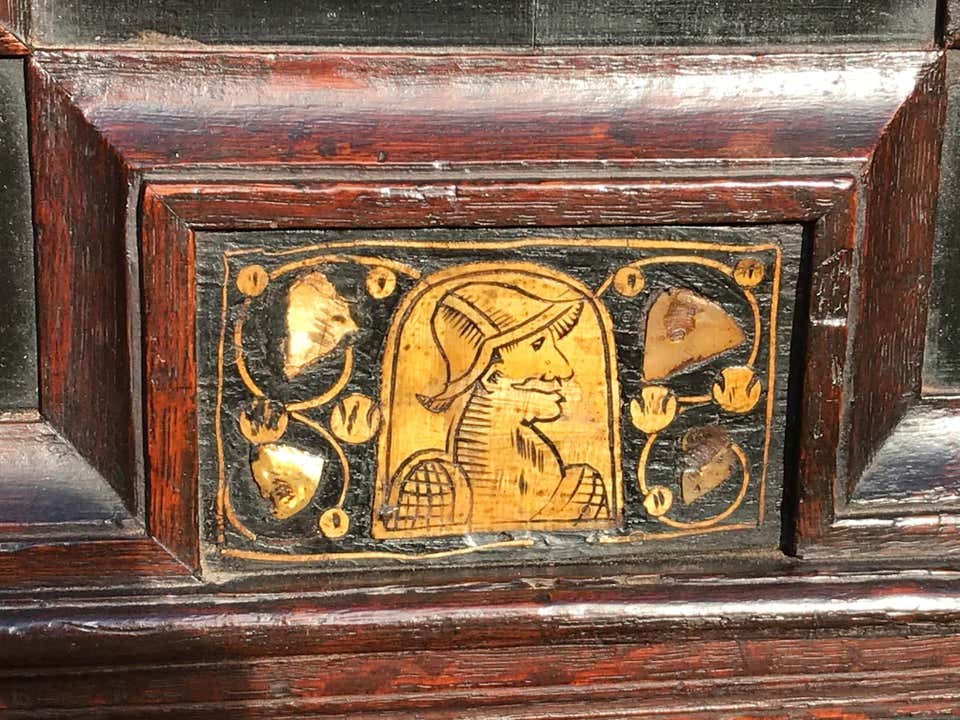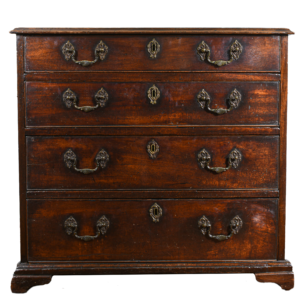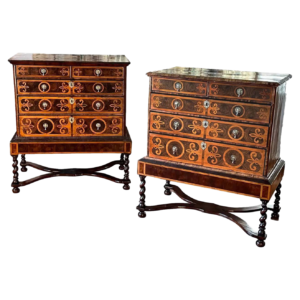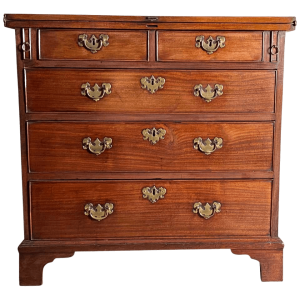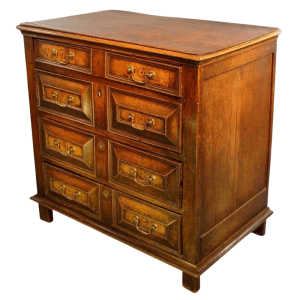Description
This exceptional 17th-century chest / cabinet has one long working drawer, and one deep drawer, with cupboards retaining internal shelving below. All faced with elaborate, mitred, geometric mouldings, applied split balusters, carved corbels, roundels and engraved mother-of-pearl and bone panels. Some panels apparently in ebony. Dentil cornice to the frieze.
Bun feet replaced following the original design. Great colour, old surfaces and overall condition is excellent. It conveniently divides into two sections.
Circa 1660.
Provenance: Lisgoole Abbey, N. Ireland.
Percy Macquoid RI, A History Of English Furniture – The Age Of Oak, Lawrence & Bullen, London (1904-08) p. 76, figs. 140 & 141, for two similar chests of ”well considered proportions and details’’.
Figs. 203 – 210 exhibit further similarities in design, and MacQuoid states that “the fashion for these chests must have been great, as many varieties of them… followed rapidly upon one another in date” [sic] pp. 97-99.
Ralph Edwards CBE FSA, The Shorter Dictionary of English Furniture, Hamlyn, London (Fourth Impression 1972) “The next stage in the evolution (of the chest) was delayed until c. 1650, when a hybrid form, half cabinet and half chest of drawers came into use among the prosperous classes” pp. 198-199, figs. 1, 2, 3 & 4.
Stourhead | National Trust
https://www.nationaltrust.org.uk/stourhead



